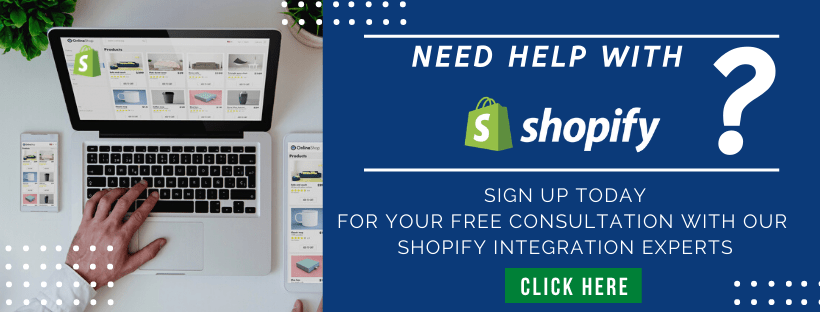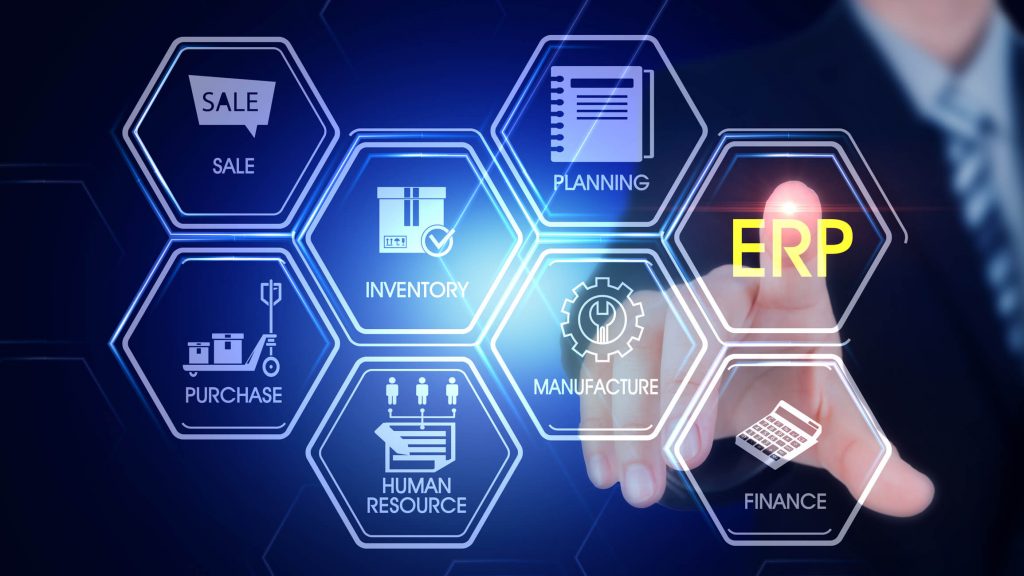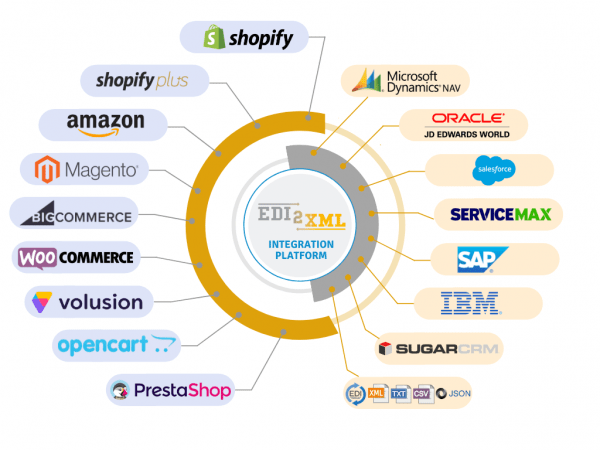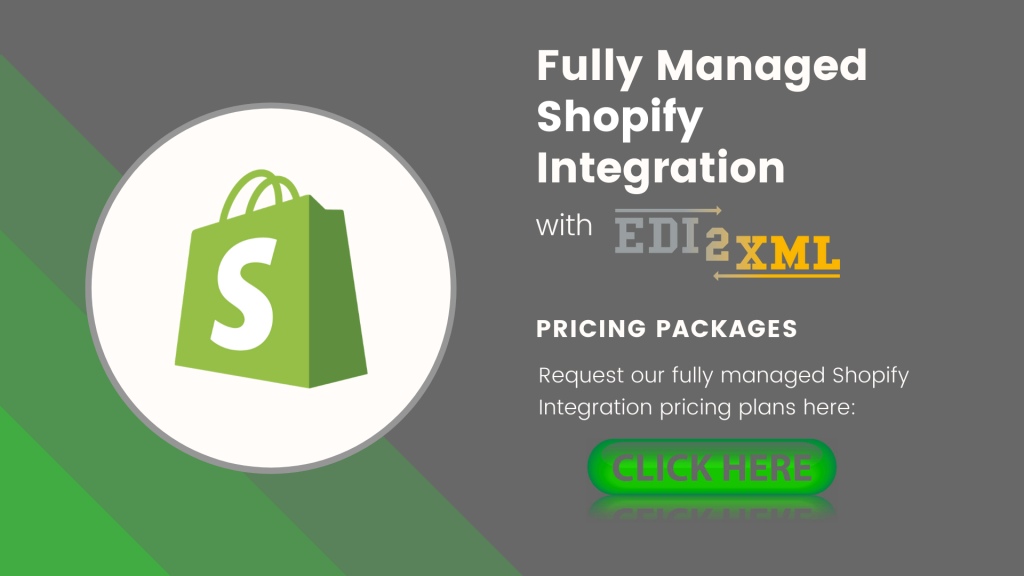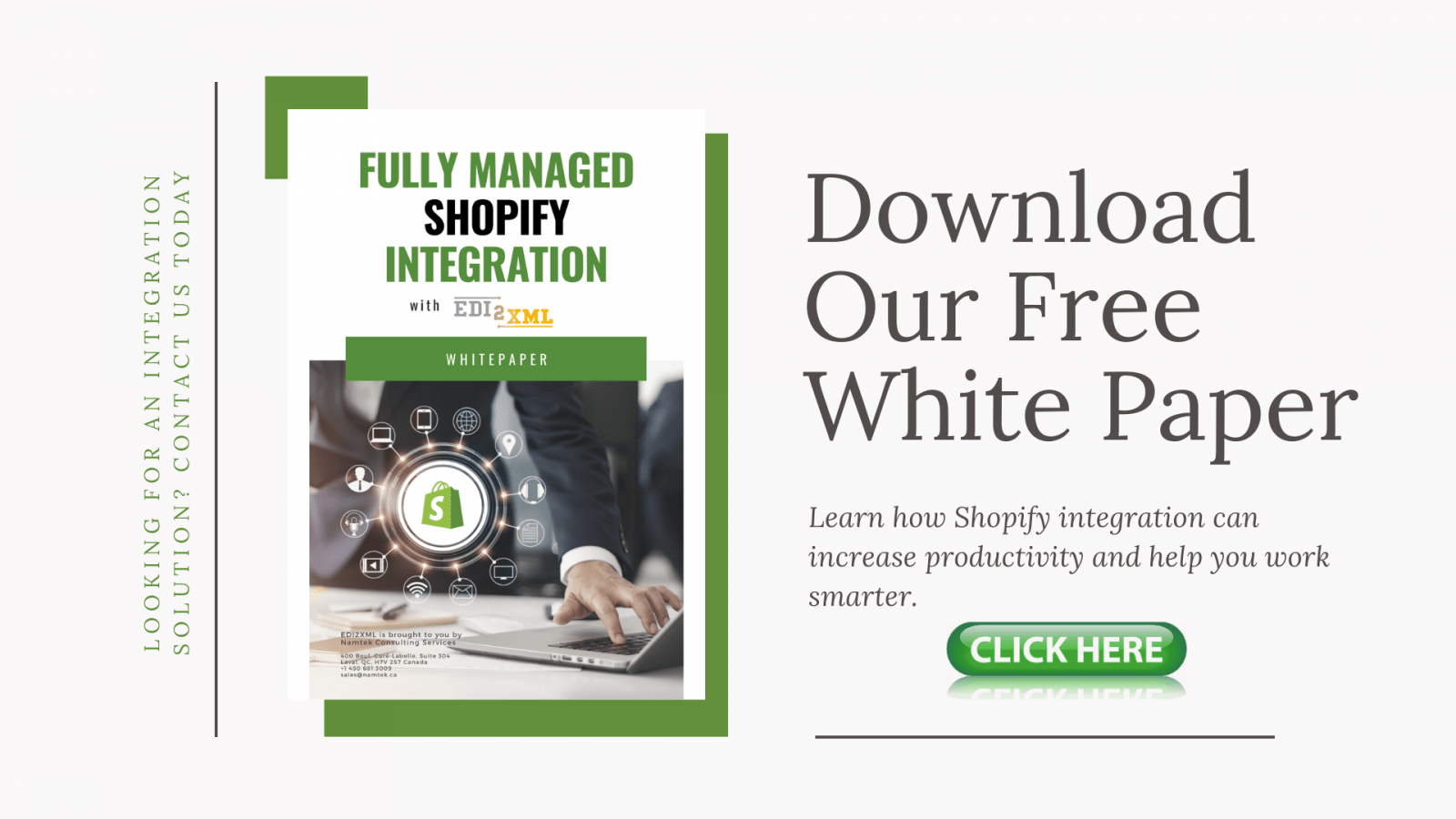Even before Shopify arrived on the e-commerce scene in 2006, our company EDI2XML already had solid experience in e-commerce integration.
We have helped companies in a variety of industries improve inventory management and operational efficiency.
Since then, our experience includes many successful e-commerce integration projects, and our passion for e-commerce remains unwavering.
Today, we’ll delve into a topic that’s exceptionally relevant for all Shopify store owners: inventory management.
The Essential of All Shopify Stores: Inventory Management
At its core, Shopify Inventory is about managing stock levels, tracking SKUs, and ensuring seamless order fulfillment.
Your inventory is not a static object. It constantly changes with each order or new arrival of goods. In Shopify, you need to get real-time information about inventory levels. Guessing games or manual reconciliations have caused a lot of problems for many businesses who haven’t gotten their inventory management right.
That is why, effective inventory management is crucial for customer satisfaction, sales, and overall business success.
Stock and Inventory Organization ERP vs Shopify Practices
Shopify store owners employ various strategies to organize their inventory efficiently. Let’s explore how ERP (Enterprise Resource Planning) systems like Oracle NetSuite ERP, SAP Business One, Microsoft Dynamics 365, Sage Intacct etc. handle inventory organization and management, drawing parallels with Shopify practices:
Collections and Sub-Collections:
- While Shopify uses collections and sub-collections to group related products, ERP systems often organize inventory using categories or product hierarchies.
- ERP categories allow businesses to group items based on attributes such as product type, brand, or department.
- Sub-collections in Shopify align with ERP subcategories or nested product hierarchies.
Product Management and Variants:
- ERP systems provide robust tools for managing product details, including descriptions, images, and pricing.
- Similar to Shopify variants, ERP systems handle product variations (e.g., different sizes, colors) within a single product record.
- ERP variants allow specifying unique inventory quantities for each variation.
Barcode Scanning:
- Both Shopify and ERP systems benefit from barcode scanning.
- ERP solutions integrate with handheld scanners, mobile apps, or RFID tags to track inventory movements.
- Barcode scanning streamlines stock intake, sales, and restocking processes.
Advanced Features in ERP:
- ERP systems go beyond Shopify by offering additional features:
- Demand Forecasting: ERP predicts future inventory needs based on historical data and market trends.
- Multi-Warehouse Management: ERP handles inventory across multiple locations or warehouses.
- Serial and Batch Tracking: ERP tracks individual items using serial numbers or batch codes.
- Safety Stock Calculation: ERP sets optimal safety stock levels to prevent stockouts.
Integration with Other Business Processes:
- ERP integrates inventory management with broader business functions such as finance, procurement, and manufacturing.
- It ensures a holistic view of operations, from raw materials to finished goods.
Customization and Scalability:
- ERP systems are highly customizable to fit specific business needs.
- As companies grow, ERP scales seamlessly to accommodate increased inventory complexity.
What are Common Inventory Management Challenges for Shopify Owners?
Inventory management is crucial for e-commerce businesses to efficiently track, organize, and control their product stock. Based on our many years of experience working with various companies (both small startups that are just starting their business and large companies that have owned a Shopify store for many years), we’ve identified several key challenges associated with Shopify inventory management.
Manual Inventory Management
Some Shopify owners may rely on manual methods for inventory management, which are prone to errors and inefficiencies, especially as the business scales.
Overselling and Stockouts
Inaccurate inventory tracking or manual errors can lead to overselling (selling more products than available) or stockouts (running out of stock) which can result in frustrated customers and lost sales.
Inventory Synchronization
If you sell across multiple channels (e.g., Shopify, Amazon, eBay), ensuring accurate inventory synchronization can be challenging. Discrepancies in stock levels across platforms can lead to fulfillment issues and customer dissatisfaction.
Complex Product Variants
Managing inventory for products with numerous variants (e.g., size, color, style) can be complex and time-consuming.
Inventory Storage and Fulfillment
Efficiently managing inventory storage and fulfillment processes, including picking, packing, and shipping orders, requires careful planning and optimization to minimize costs and streamline operations.
Some of these problems can be solved by using Shopify’s built-in features and public applications, but in our experience, using custom third-party integrations greatly improves efficiency and accuracy, especially for growing and ever-changing businesses.

Shopify Inventory Management Options: Built-in Tools vs. Integrating with ERP
When it comes to Shopify inventory management, choosing between built-in tools and integration with your ERP (Enterprise Resource Planning) system is a crucial decision.
The choice depends on your business model, scalability, and existing infrastructure.
New businesses embarking on their e-commerce journey often face the decision of how to manage inventory effectively. Often they start with Shopify’s native tools, but as they evolve, ERP integrations become more appealing.
For companies that already have an ERP system in place, integrating with a Shopify store provides many benefits. Again, here companies with an existing ERP system can choose from two main approaches: use ready-made public app or use the services of a third-party integration provider for custom integration completed just for you.
Let’s explore the Shopify build-in inventory tool, as well as the Integration with ERP via public app and custom integrations with third-party providers.
USEFUL READING: Secrets and rules of Shopify integration with your ERP or CRM
Shopify’s Built-In Inventory Tracking
Shopify’s native inventory tracking system is reliable for most new, small businesses. It provides real-time updates on stock levels, preventing overselling and stockouts.
Advantages:
Ease of Use: It’s straightforward to set up and manage within the Shopify admin.
Cost-Effective: No additional fees for using Shopify’s built-in tracking.
Centralized Solution: Integrated seamlessly with other Shopify features.
Limitations:
Scalability: As your business grows, these tools might become less robust. Moreover, for medium-size and large enterprises or complex multi-channel operations, Shopify’s native system may lack advanced features.
Customization: Limited customization options for specific business needs.
Standard Features: Built-in tools may not cover all advanced inventory management needs.
Customization: Limited flexibility for unique requirements.
Shopify Ready-Made Public Apps vs Custom Integration with Third-Party Integration Provider
Here’s a comparison of using a public app for integration versus opting for custom integration with third-party providers:
Customization and Tailored Solutions:
Public App: Public apps offer standardized solutions with predefined features and functionalities. While they provide convenience and quick setup, they may lack the ability to fully customize the integration to fit specific business needs.
Custom Integration with Third-Party Provider: Custom integrations with third-party providers allow for tailor-made solutions that can be precisely customized to meet the unique requirements of the business.
This level of customization ensures that the integration aligns closely with the business’s workflows, processes, and objectives, potentially leading to more efficient and profitable outcomes.
Scalability and Flexibility:
Public App: Public apps are designed to be scalable and accessible to businesses of all sizes. However, they may have limitations in terms of scalability and flexibility, particularly as the business grows or requires more advanced features.
Custom Integration with Third-Party Provider: Custom integrations offer greater scalability and flexibility, allowing businesses to adapt and evolve the integration as their needs change over time. This scalability ensures that the integration remains effective and efficient, supporting the business’s growth and expansion while maximizing profitability.
Cost-Effectiveness and ROI:
Public App: Public apps generally offer affordable pricing plans, including free options with basic features and premium plans with advanced functionalities. While they provide value for businesses with limited budgets, the return on investment (ROI) may vary depending on the specific needs and requirements of the business.
Custom Integration with Third-Party Provider: Custom integrations may involve higher upfront costs due to development expenses. However, the potential for a higher ROI exists as the integration can be tailored to deliver specific business outcomes, such as increased efficiency, productivity, and profitability. By investing in a custom integration with a third-party provider, businesses can potentially achieve greater long-term value and competitive advantage.
Competitive Advantage and Differentiation:
Public App: Public apps offer standardized solutions that are accessible to all businesses using the same platform. While they provide essential functionalities, they may not offer unique features or capabilities.
Custom Integration with Third-Party Provider: Custom integrations enable businesses to differentiate themselves from competitors by implementing unique features, workflows, and capabilities that are tailored to their specific needs and objectives. This competitive advantage can help businesses stand out in the market, attract more customers, and ultimately drive profitability.
Benefits of Custom ERP integration with Shopify
Custom integrations require technical expertise and development time, but the benefits far outweigh the initial investment. Let’s explore why this integration is crucial:
Streamlined Business Processes:
- Custom integrations between ERP and Shopify allow you to tailor the connection to match your specific workflows.
- Automate processes such as order management, inventory control, and fulfillment.
- Minimize manual data input and enhance workflow efficiency throughout your entire business.
Increased Data Accuracy:
- Real-time synchronization ensures that data remains consistent between systems.
- Eliminate discrepancies caused by manual transfers.
- A better decision can be made with accurate inventory information, pricing, and product information.
Better Inventory Management:
- ERP integration provides real /or near real-time inventory counts across your stores and warehouses.
- Continually updated inventory levels prevent stockouts and overselling.
Improved Customer Experience:
- Real-time access to order status, inventory levels, and delivery information.
- Customers receive accurate information promptly.
Enhanced Efficiency and Productivity:
- Automation reduces manual tasks, allowing your team to focus on strategic activities.
- Increased efficiency translates to higher productivity and cost savings.
Advanced Reporting and Insights:
- Combined data from ERP and Shopify enables comprehensive reporting.
- Analyze sales trends, inventory velocity, and financial performance.
- Make informed decisions based on data-driven insights.
Conclusion: How to Master Shopify Inventory Management
Eventually, the decision between built-in Shopify applications or integrations with ERP depends on your specific business requirements, and long-term goals. For simple inventory management needs and smaller businesses, built-in Shopify applications may suffice.
However, if you want better inventory management, investing in a custom integration may be the better option for long-term scalability and competitiveness.
Collaboration with experienced integration provider like EDI2XML to build a robust connection between your ERP and Shopify.
We at EDI2XML are committed to helping companies improve their e-commerce businesses.
Our experts are ready to help. Book a free consultation to discuss your goals, challenges, and vision for your e-commerce business. Feel free to schedule a convenient time with us through our calendar or reach out via the contact form below. We look forward to helping you succeed in your e-commerce journey!
